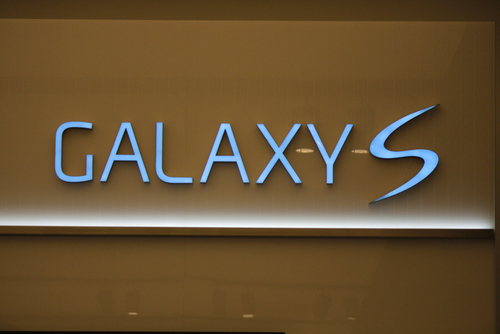April 22nd, 2014

At the end of March, HTC released their latest flagship smartphone, the HTC One M8. Leading up to the release and in the weeks since, the device has earned rave reviews for a number of innovative features and high quality specs. But, it’s not perfect, as no smartphone could be. At CIO, Al Sacco explained his biggest beefs with HTC’s offering.
The first feature that sticks out about the One M8 is that it uses dual lenses on its rear-facing camera. HTC calls it “UltraPixel” technology. The two lenses are expected to accurately calculate the distance of subjects in order to yield better images. In reality, bright light environments result in washed out colors. Combined with the lower than expected 4 MP, the One M8’s camera is a definite disappointment.
The One M8 comes with a bundle of software that gives the device a number of features that sound great on paper. In practice, many users find them cumbersome, annoying or useless. HTC Sense features include gesture based commands and a home screen panel designed to deliver interesting information. In most cases, these features feel gimmicky and actually inhibit users from accomplishing their tasks.
The fact that the One M8 features memory card support is noteworthy. With a capacity for microSD cards up to 128GB, users are able to add plenty of space for nearly any application. The execution of this memory card support is lacking, however. Specifically, the only way to open the slot to add or remove a memory card is with a small tool that comes with the phone. This is limiting for a mobile device that might not stay close to the tool at all times. It’s also extremely easy to lose or misplace the tool, which means you’ll be left prying open the memory card slot with a paper clip.
This final complaint isn’t about the actual smartphone at all. Instead, it focuses on the highly publicized Dot View case, which has appeared in most of the advertising for the One M8. Some readers will immediately see the case’s display as similar to a Light Bright. There are small holes that display lights of different colors to allow users to check the time, get notifications and even answer phone calls without opening the case and turning on the screen. Again, on paper this sounds great. The problem is how cheap the case feels. At a retail price of $45, that’s unacceptable. It’s also awkward to use and keep open when you actually want to use your phone. Since it doesn’t do anything revolutionary, considering most smartphones display similar information on their lock screen, this case certainly isn’t a reason to purchase the device.
These flaws don’t necessarily mean that the HTC One M8 is not right for some users. No smartphone is perfect, but it’s best to understand the positives and negatives before hitching yourself to your next phone.
Regardless of the make and model of your smartphone, Geek Rescue is here to fix it when it breaks. When you have issues with any of your devices, come by or call us at 918-369-4335.
February 25th, 2014

Any time a new iPhone debuts, it makes worldwide news, but there is a sizable audience that’s equally interested in new Android smartphones. Samsung’s Galaxy line recently debuted its newest member, the S5, at an event in Barcelona. Al Sacco of CIO reported on the new specifications and features.
The Galaxy S5 is bigger than its predecessors, which was expected. It outweighs the GS4 by 15 grams. It’s also slightly taller, wider and deeper. The additional size and weight is partly attributed to a larger battery, which is 2800 mAh compared to 2600 mAh for the GS4.
The display on the S5 is also bigger, but not by much. At 5.1-inches, it has only gained 1-tenth of an inch on the previous Galaxy smartphone. Otherwise, not much has changed. There’s still a full HD Super AMOLED display at 1920×1080. The display on the new S5 is regarded as brighter at the highest setting, however.
Other manufacturers have made a 64-GB storage option for their newest, top of the line smartphones. The Galaxy S5, however, only has a 16-GB and 32-GB model. It does support external memory cards up to 64-GB.
The processor is where the S5 received the biggest upgrade. Inside, you’ll find a blazing fast 2.5 GHz quad-core processor as opposed to the 1.6 GHz chip found in the S4.
The camera on smartphones has become just as important as any conventional phone features. The Galaxy S5 features one of the best camera you’ll find with a front facing 2.1 MP camera and a 16 MP rear camera. As with any Samsung smartphone, there are also new camera features to play with. In the S5, there’s reportedly the fastest auto-focus in any smartphone and a tool to focus on one specific part of a photo and blur the rest.
The Galaxy S5 follows in the footsteps of the latest iPhones to offer biometric security. A fingerprint scanner is included in the home button to help secure your phone, but you’ll have to actually swipe your finger, rather than just holding it to the sensor.
Samsung is also making an effort to include features on their phones that are typically found in increasingly popular fitness bands. As part of their included S Health app, a heart rate monitor is built in to the smartphone.
There’s also a power saving function that everyone needs from time to time. Ultra Power Saving Mode disables non-essential functions in situations when you can’t afford for your phone to die, but the battery is critically low.
Finally, Samsung introduced Download Booster, which claims to allow WiFi and your LTE connection to work together to produce better download speeds.
There are sure to be plenty of additional testing and features revealed ahead of the Galaxy S5’s official release on April 11th.
In the meantime, whether you have the latest smartphone or an older model, Geek Rescue has you covered when something breaks. For hardware damage, malware infections and more, call Geek Rescue at 918-369-4335.
February 11th, 2014

One of the biggest mistakes made in security by local businesses is a belief that they won’t be targeted in an attack because they have less to offer than larger enterprises. That mistake leads to weak security, which attracts attacks and leaves you susceptible to untargeted attacks. Take the latest news of a Cryptolocker victim for example. John E. Dunn of CIO reports that a local law firm in Charlotte recently lost critical data after Cryptolocker infected their network.
Cryptolocker found its way on the law firms computers after an email and its malicious attachment were mistakenly opened. An employee believed the email was from the firm’s phone answering service. After that, Cryptolocker couldn’t be stopped from encrypting thousands of legal documents critical to the law firm’s operations.
The nature of law firms makes them enticing targets for Cryptolocker and similar attacks because they can’t afford to lose access to their documents. Any business with money to spend, but no time to waste is likely to pay the ransom associated with decrypting files.
In the case of the Charlotte law firm, their IT team first attempted to unlock the files and work around the malware. When their efforts were unsuccessful, the firm attempted to pay the $300 ransom, but they were informed that the deadline had past and the files were permanently locked.
The law firm notes that had an attack stolen the important documents, rather than only encrypting them, the damage could’ve been much worse. Still, they lost access to every file stored on their main server, which prevents them from serving many of their clients.
For any size business, it’s important to educate employees about this type of threat in order to avoid infection in the first place. Regular back-ups of files will also save you from a disastrous loss of data.
Small business owners need to stop believing that an attack of this nature will never happen to them. Malware infections are costly to any business and statistically just as likely to strike small, local companies as they are large enterprises.
For help improving the security at your business, or for help recovering from a malware infection, call Geek Rescue at 918-369-4335.
January 13th, 2014

Regardless of what task you’re trying to accomplish, your success is dependent to some degree on the tool you’re using. When it comes to computers, faster processors and more RAM typically suggest a machine is more suited to more complex tasks, like those you might be faced with at work everyday. At CIO, John Brandon tested three top of the line laptops to find which one is the most valuable for professionals. Here are the results.
The very construction of this laptop stands out because it’s also a tablet. Flip the screen and fold it over the keyboard to transform laptop to tablet. This is built like a laptop, however, so it runs off of a 1.8 GHz processor instead of slower mobile processors found in top of the line tablets. The screen boasts 2800 x 1620 screen with high resolution for crisp images. It comes with Bluetooth 4.0 connections, quick syncing capabilities with near-field communication and can wirelessly connect to an HDTV. Even with 1 TB of hard drive space and 12 GB of RAM, the Flip 15 only weights about 5 pounds and includes a battery that lasts up to 5 hours. The display and extra features top this list, but performance, while fast, is the slowest of the three laptops tested. Still, you get a fast laptop that’s capable of tasks many laptops aren’t for a price tag of $1799.
This entry from Hewlett Packard is built for demanding tasks like data analytics or photo and video editing. The graphics card is top notch, there’s a BluRay optical drive capable of fast, exhaustive back-ups and it out-performed the other two laptops on this list. The processor runs at 2.7 GHz but can go to Turbo Mode and get kicked up to 3.7 GHz. It also features Bluetooth 4.0 ports and lasts about 5 hours on one charge. But there’s no NFC for quickly syncing with other devices and no HDTV connecting capabilities. At nearly $3-thousand, it’s by far the most expensive laptop tested, but the ZBook 15 backs up the price tag with elite performance. The lack of additional capabilities makes it less useful for the masses, however.
A 2.2 GHz processor, 12 GB of RAM and a high end graphics card put this Acer laptop in the same ballpark as the other two on this list, but it comes at a relatively cheap price of $1099. It weighs in at over 7-pounds making it the heaviest laptop tested and its battery only lasts about 4-hours on one charge. Still, it came close in performance with the ZBook 15 and features a huge 17.3-inch widescreen display. Again, Bluetooth 4.0 is here, but little else. For the price, that seems understandable.
These certainly aren’t the only top-end laptops worth the money, but it’s interesting to pit them against each other to see what you’re really paying for. If you’d rather upgrade your existing laptop, or need repairs, call Geek Rescue at 918-369-4335.
December 17th, 2013

For business and even personal use, the cloud is earning the trust of more and more users. But, privacy and security remain major concerns. Victoria Ivey of CIO published a list of ways to maintain better security with the cloud, which mostly involve more diligence from users.
There are a seemingly endless number of options for how to use the cloud, but it’s not for everything. When it comes to storing data, your most valued, vital, important files should probably stay away. Cloud storage isn’t particularly insecure, but it doesn’t provide enough security for the data you absolutely cannot afford to lose.
Perhaps the most disregarded document in history is the user agreement. For cloud storage solutions, however, it’s necessary to wade through them. They contain important information about what your cloud provider offers and what level of protection you’re afforded. If you’d rather not read it, take some time to talk to your provider in-depth about the services. Knowing the details of your cloud service will help you use it better.
Passwords are a respectable security tool when used correctly. Unfortunately, most users insist on using a password they can easily remember and use no other considerations. This makes a password easily hackable. This doesn’t only apply to the cloud, but strong passwords are a must for every online account.
For added cloud security, use encryption on all data stored there. This way, if a third party does gain access to your cloud storage, there will be another layer of security in place to keep them from stealing data. There are a number of ways to encrypt files and some cloud providers will include encryption with your service. There have been cases where cloud providers have decrypted users’ data, however and allowed access to other parties. So, be cautious when choosing a provider and don’t blindly trust encryption services unless you’re the only one holding the key.
These are some basic, general tips for improved security with cloud computing. Research your provider and the services you’re signing up for and make sure you understand how the cloud works and how to best use it.
To find out what the cloud can do for you, call Geek Rescue at 918-369-4335. We offer a variety of cloud services and help you understand how the cloud is best utilized by your business.
October 21st, 2013

The security of data is extremely important for any business. The loss of data by any means can mean you’re unable to do business, or you’ve put your customers at risk. Sharon Florentine, of CIO, has a list of some common security risks and how to deal with them.
Smartphones are constantly being left behind in airports, coffee shops and bars. Laptops and tablets are the prime targets for thieves. When these devices have access to vital company data, or store data themselves, it becomes a serious problem. To combat it, back-up everything so you’ll still have access to it when that device disappears. Also, be sure to put protection in place so you can remotely wipe the device of any potentially harmful information.
Bring Your Own Device refers to employees using personal devices to access the company network and company files. This becomes a security headache because most individual’s fail to put proper security in place on their devices, and the devices might be infected with malware, which can then infect the entire network. Limiting employee access to certain files when on their own device is important. Ensuring that each employee has proper security in place on their devices is as well.
Without the proper protection in place, traffic from your network, or to your website, could be redirected through someone else’s server. This would allow that third party to collect data. For your most vital files and applications, create lists of authorized users, devices and IP addresses so no one else is able to access them.
There are unfortunately a number of ways to lose valuable data. Whether a device is physically stolen, or digitally compromised, you need to plan ahead for disaster.
Geek Rescue has the tools to help secure your company data, and recover and restore lost data. Call us at 918-369-4335 to improve your company’s cyber security.
October 8th, 2013

Is your home WiFi network secure? Unfortunately, there’s a lot of bad information out there that convinces users that they’ve secured their home network, when in actuality it’s still as vulnerable as ever.
Eric Geier, of CIO, set out to debunk some popular myths regarding WiFi security in a recent article. The items on this list have been proven to be inconsequential for protecting you against potential threats.
You’ll find many individuals across the web suggesting you stop broadcasting your wireless router’s name, known as its SSID, or Service Set Identifier. This is to keep your network invisible from those you want to keep out. However, it will still be visible to most users and the SSID is easy to discover for hackers. Plus, trying to stay invisible can make you a target as criminals believe there may be valuable data on your network that you’re trying to conceal.
MAC stands for Media Access Control. A MAC address is an alphanumeric code used to uniquely identify each device on your network. You’re able to configure your router to only allow certain MAC addresses access to your network. In theory, this would keep out unwanted network users, even if they have your network’s password. However, hackers have tools to easily see the list of accepted MAC addresses and can then change their device’s address to match one of those. This makes MAC address filtering little more than a time waster.
In addition to the MAC address, each device on your network has a unique Internet Protocol, or IP, address. Your router issues an IP address to each device when they join the network. By changing configuration so your router only has a limited number of IP addresses to issue, you should be able to limit how many users your network can possibly have. Hackers are able to scan for IP addresses being used by your network, however. They can then assign an acceptable one to their device and by pass this security measure.
Another myth is that reducing the power of your wireless router will make it harder to be accessed by anyone outside your home. The theory is that since the WiFi network won’t be visible from as far away, not as many people will be able to penetrate it. Hackers use high-powered antennas, however. So, having a low powered router will only limit your use of your network.
If you’d like to truly secure your network, consider encryption and firewalls. Coupled with regularly updated antivirus software, this is the best way to keep your network and computer safe. For help improving the cyber security at your home or office, contact Geek Rescue at 918-369-4335.
September 25th, 2013

It’s easy to understand why so many hackers are targeting social media for cyber attacks. Where else would you find such a high collection of unsuspecting people? Many users have grown wise to email attacks and have learned to avoid suspicious emails. Social media, however, is still seen by most as a safe place. Throw in that many users access social media on mobile phones, which often lack necessary security, and you have an irresistible target for hackers.
John P. Mello, of CIO, reports that these attacks claim victims using the trust of users against them. Similar tactics as previously seen in creating fake versions of legitimate websites, or sending phishing emails that appear to be from legitimate sources, have been adapted for social media. The trend is to take over an account with a large number of followers and credibility and use it to spread malicious links.
These attacks are difficult to avoid because they appear to be coming from a trusted source. You wouldn’t expect a Twitter account that you’ve followed for years to suddenly be directing you to a phishing site, or infecting you with malware.
This isn’t only a concern for individuals either. Businesses need to be aware of these threats to security also. Another reason that social media is so attractive to hackers is that so many users access social media on their company’s network. This means that if any of your employees encounter a hacked profile, they are putting your company’s data at risk.
There are a number of options for how to deal with these threats. Blocking social media sites is one. Educating employees about the risk and making sure they understand how to avoid these attacks is another.
To improve your company’s security, contact Geek Rescue at 918-369-4335. We offer security software that is capable of blocking potentially dangerous sites and catching malware before it infects your system.
September 4th, 2013

If you own a computer, or any device really, you’re likely to encounter problems from time to time. But, as Ben Kim of CIO points out, some of the more common problems have easy fixes that you can handle yourself.
Regardless of the problem and before you try anything else, restart your computer. There’s a reason this is cliched advice. For many issues, a restart will put everything right.
Your system will slow down when your hard drive gets too full. If you’ve noticed a sluggish performance, try clearing some space. Windows users will also want to use Microsoft’s System Configuration tool to trim down the number of applications that open automatically on start-up. To access it, press Windows-R, type “msconfig” and hit Enter.
If your downloads are taking longer than they should, test your connection speed. You can do this on a number of websites. Resetting your modem and router is also a good idea before contacting your Internet Service Provider.
If you’re seeing a high number of pop-ups ads, you’ll want to make sure you have a pop-up blocker enabled in your browser. If they appear when you aren’t even surfing the internet, you’ve got adware. This usually stems from you installing a program that had adware hidden in it. To remove it, try running any security software you may have, or installing new adware-specific programs.
If you’re sitting in range of your wireless router, but you still get a weak signal or constant disconnects, there are a couple of fixes. First, try resetting the modem and router. Then, let Windows troubleshoot the problem for you by right-clicking on the Wi-Fi icon in the taskbar and selecting ‘Diagnose Problem” or “Troubleshoot Problems”.
We’ve all had our share of printer-related headaches. Check to make sure there’s enough ink, toner and paper and the notification light isn’t blinking. Turn the printer off, then back on. You can even completely unplug the power supply and wait a few seconds before plugging it back in. If you still can’t print, check to see if the “Use Printer Offline” option is enabled. Windows will switch this automatically in some circumstances so make sure to uncheck it.
If these fixes don’t work or you have a more serious issue, call Geek Rescue at 918-369-4335. Our team of techs fix any problem your device may have. Give us a call, or bring your device to one of our convenient locations.
August 28th, 2013

Is your organization the target of a cyber attack? Almost definitely, yes.
John P. Mello reports for CIO that “about half of global organizations have suffered a cyber attack in the last year”.
What you should take away from that statistic is that every organization is at risk, regardless of size, who they cater to and what industry they’re in.
Here’s why an attack is such a major concern for any business. About 65-percent of attacks result in a loss of revenue because of system and employee downtime. About 19-percent result in the loss of potentially valuable data. If you aren’t protecting yourself properly, you’re inviting criminals to affect your bottom line.
Many of the cyber attacks that affect businesses worldwide are not of the targeted variety. A targeted attack implies that an individual hacker or group specifically came after your company for a reason. That reason can be because they wanted specific data, or just because they don’t like your company.
If an attack isn’t targeted, it’s usually the result of bad surfing practices by employees or lax security. Hackers unleash malware on the public with no specific target in mind and wait for their tactics to pay off. Clicking a bad link, opening spam email or downloading a file all opens the door for these attacks.
Detection of these attacks is key. Just as stopping a virus attacking a human body is easiest when detection is early, early detection of a cyber threat makes stopping the threat and closing the gap in security much easier.
To improve your company’s security, call Geek Rescue at 918-369-4335. We offer a customized approach to safeguard your data and network.




















